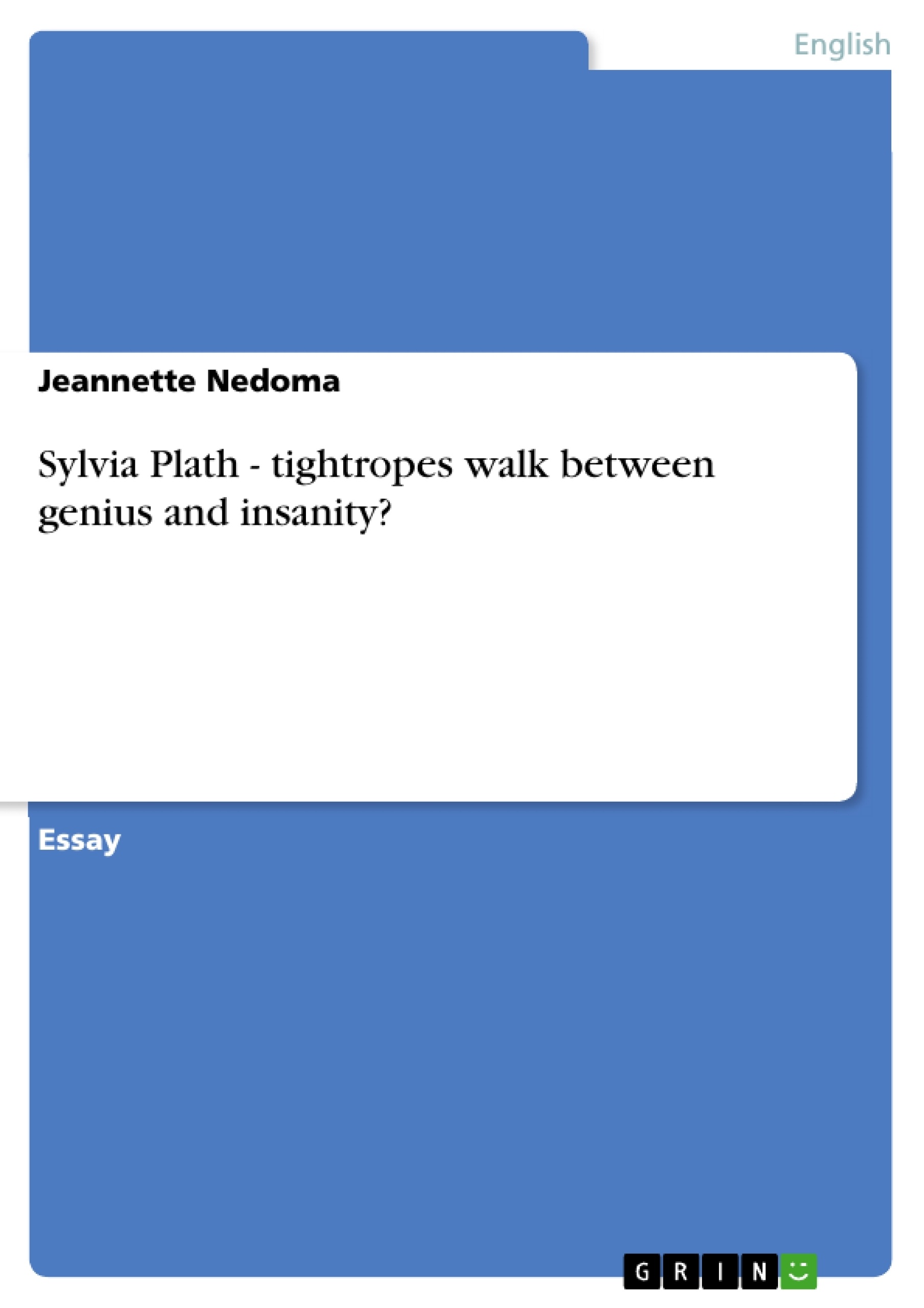1. Biographical Overview Sylvia Plath (based on Hayman) 3
2. Interpretation of Sylvia Plath`s poem “Tulips” 5
2.1. Symbolic features in Sylvia Plath’s poem “Tulips” 7
2.1.1. Symbol “Tulip” 7
2.1.2. Symbol “White” 10
2.1.3. Symbol “Red” 11
3. Sylvia Plath’s father- The cause for her neuroses and depression? 12
4. The relationship between Sylvia and Aurelia Plath 14
5. Sylvia Plath’s death wish 15
6. Sylvia Plath and Ted Hughes (based on Hayman) 18
8. Conclusion 20
9. Bibliography 21
Internet Sources 21
10. Tulips 23
Inhaltsverzeichnis (Table of Contents)
- Biographical Overview Sylvia Plath (based on Hayman)
- Interpretation of Sylvia Plath`s poem “Tulips”.
- Symbolic features in Sylvia Plath's poem "Tulips".
- Symbol "Tulip"
- Symbol "White"
- Symbol "Red"
- Symbolic features in Sylvia Plath's poem "Tulips".
- Sylvia Plath's father- The cause for her neuroses and depression?
- The relationship between Sylvia and Aurelia Plath
- Sylvia Plath's death wish.
- Sylvia Plath and Ted Hughes (based on Hayman).
- Conclusion...
Zielsetzung und Themenschwerpunkte (Objectives and Key Themes)
This paper explores the life and work of Sylvia Plath, focusing on the themes of mental illness, death, and the impact of personal relationships on artistic creativity. It examines the connections between Plath's personal experiences and her writing, particularly in the context of her poem "Tulips."
- The impact of personal trauma and mental illness on Sylvia Plath's life and work.
- The symbolism and themes explored in Plath's poem "Tulips," including the significance of color, nature, and hospital imagery.
- The complex relationship between Sylvia Plath and her father, and its potential influence on her mental state.
- The nature of Sylvia Plath's death wish and its manifestation in her writing.
- The dynamics of Sylvia Plath's relationship with Ted Hughes, and its role in her life and artistic development.
Zusammenfassung der Kapitel (Chapter Summaries)
The first chapter provides a biographical overview of Sylvia Plath's life, drawing heavily on Ronald Hayman's "The Death and Life of Sylvia Plath." It chronicles key events in Plath's life, including her childhood, her education, her marriage to Ted Hughes, and her struggles with mental illness.
The second chapter focuses on a detailed interpretation of Plath's poem "Tulips," exploring its symbolic elements and connection to Plath's personal experiences. The chapter analyzes the significance of the tulip, the colors white and red, and the hospital setting in the poem.
The third chapter delves into the potential influence of Sylvia Plath's father on her neuroses and depression. It examines the impact of his death on Plath's childhood and her subsequent psychological development.
The fourth chapter explores the complex relationship between Sylvia Plath and her mother, Aurelia Plath. It sheds light on the dynamics of their relationship and its possible implications for Plath's artistic development.
The fifth chapter examines Sylvia Plath's death wish, exploring its origins and its manifestation in her writing. This chapter delves into the themes of mortality, self-destruction, and the desire for oblivion that permeate Plath's work.
The sixth chapter explores the relationship between Sylvia Plath and Ted Hughes, focusing on its complexities and its influence on both their lives and artistic careers.
Schlüsselwörter (Keywords)
The primary keywords and focus topics of this paper include Sylvia Plath, "Tulips," mental illness, death, symbolism, personal relationships, artistic creativity, hospital imagery, and Ted Hughes.
- Citar trabajo
- Jeannette Nedoma (Autor), 2006, Sylvia Plath - tightropes walk between genius and insanity?, Múnich, GRIN Verlag, https://www.grin.com/document/111219




